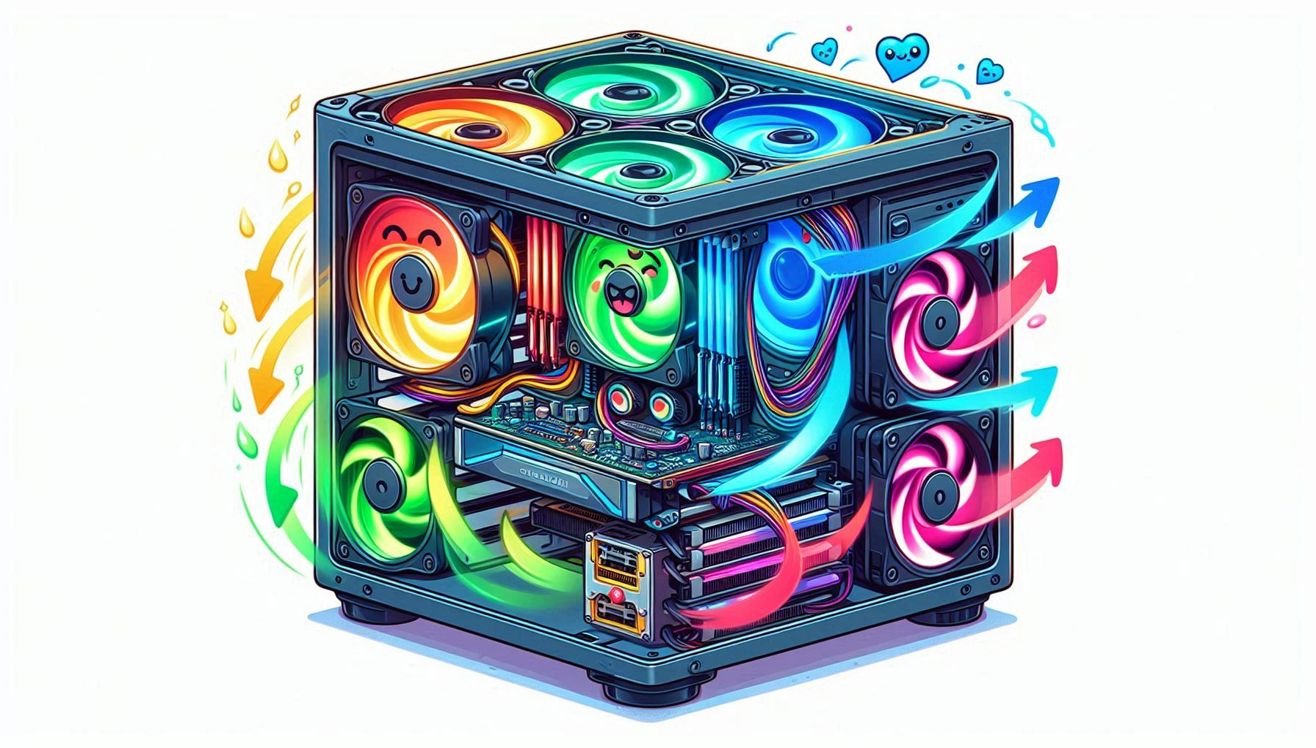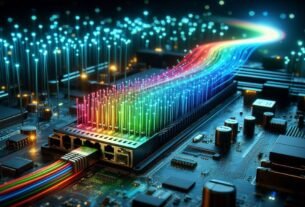— Cool solutions for hot heads!
Hello, tech lover friend! 👋
Today, I want to introduce you to a little hero inside your computer case that’s always spinning with a steady “whirr” but rarely gets the credit it deserves: the FAN!
Yes, you heard right. The star of this post is a fan. But not just any fan — it’s the tech angel wiping the sweat off your CPU’s forehead and calming down your GPU’s tantrums!
🌀 What Is a Fan and Why Do We Have It?
A fan is a rotating blade system that prevents computer components — especially the CPU, GPU, and power supply — from overheating.
As your computer works, the circuits inside fill with energy and heat up, sometimes enough to make you wonder, “Is there a sauna inside this case?”
That’s where the fan steps in: “Hold on! I’m here! I’ll cool you down!” and it starts spinning. 😎
🔥 Where Does Heat Come From?
Every operation inside a computer runs on electric current. Electricity = energy, energy = heat.
When you open 85 tabs in your browser, the computer might not shout “Enough, Cansu, what is this madness?!” but inside, it’s definitely heating up.
The first defense against this heat? Fan systems.
🎓 The Evolution of the Fan: Once Upon a Time, It Was Quiet…
1. The First Fans – Spin, Spin, Spin
Early PCs had tiny fans — imagine just a little propeller glued on top of the CPU.
Their job: Spin. Make noise. Cool? Well… that was mostly luck.
2. Smart Fans – Adding Meaning to the Spin
Over time, fans got smarter.
– “Oh, the CPU hit 30°C, better speed up.”
– “No load now, I’ll chill and be quiet.”
These fans adjust speed based on temperature and environment. Emotional fans, you could say.
3. RGB Fans – A Party of Coolness and Lights
One day someone said: “They spin, but why don’t they shine?”
And thus, RGB fans were born. Now computers not only stayed cool but shone like discos.
Cooling? ✔️
Aesthetic? ✔️
Show-off factor? Triple ✔️
❄️ What Happens Without Fans?
- The computer overheats.
- Performance drops.
- The system slows down.
- Blue screen greets you.
- Long term: It can burn out. Literally.
A fan isn’t just a noisy propeller; it’s a vital organ keeping your computer healthy.
Silencing it means knowingly throwing your PC into the fire. (Literally.)
🔧 Where Are Fans Used?
| Fan Type | Location | Purpose |
|---|---|---|
| CPU Fan | On the processor | Controls CPU temperature |
| GPU Fan | On the graphics card | Prevents GPU from overheating |
| Case Fan | Front/back of the case | Provides general airflow |
| PSU Fan | Inside the power supply | Removes heat generated by power conversion |
| Laptop Fan | Hidden inside laptops | Tries to cool the entire system alone… (Good luck!) |
🛠️ How Does a Fan Connect to the Case?
Case fans usually come with 3-pin or 4-pin connectors.
- 3-pin fans have power, ground, and speed signal pins.
- 4-pin fans add a PWM (Pulse Width Modulation) pin for more precise speed control.
The connector plugs into the motherboard’s fan header. Sometimes fans connect directly to the power supply via Molex or SATA power cables.
When installing, pay attention to airflow direction; usually, there’s an arrow on the fan showing airflow. Proper airflow means intake fans at the front (bringing cool air in) and exhaust fans at the back or top (pushing hot air out).
🧰 How to Choose a Fan?
- Size: Must fit your case (common sizes: 80mm, 120mm, 140mm).
- Noise level: Look for low decibels (dBA). You don’t want to hear it while sleeping.
- Airflow: Higher RPM and CFM means better cooling.
- Control: PWM fans offer better speed management.
- Looks: RGB or ARGB lighting if you want your rig to shine.
- Quality and durability: Cheap fans tend to be noisy and short-lived.
⭐ Recommended Good Fan Brands
- Noctua: Quiet, durable, performance beasts.
- Corsair: Popular for RGB and strong cooling.
- be quiet!: True to their name, ultra-silent fans.
- NZXT: Modern designs and powerful cooling.
- Cooler Master: Affordable and varied options.
- Arctic: Budget-friendly with effective cooling.
😂 Bonus: Fan Problems and Dramatic Moments
- Fan installed backwards (turns the case into an oven instead of cooling).
- Cable caught, fan won’t spin (computer’s in sauna mode).
- Fan full of dust (looks like all the wool socks in the house got stuck there).
💬 Conclusion: Life Is Good As Long As the Fan Keeps Spinning
A fan isn’t just a spinning blade. It’s the lungs of your computer.
While it spins, we render videos, play games, code, and keep 85 tabs open.
If it stops… everything stops.
So love your fan. Keep it clean. Replace it if needed. Never underestimate it.




